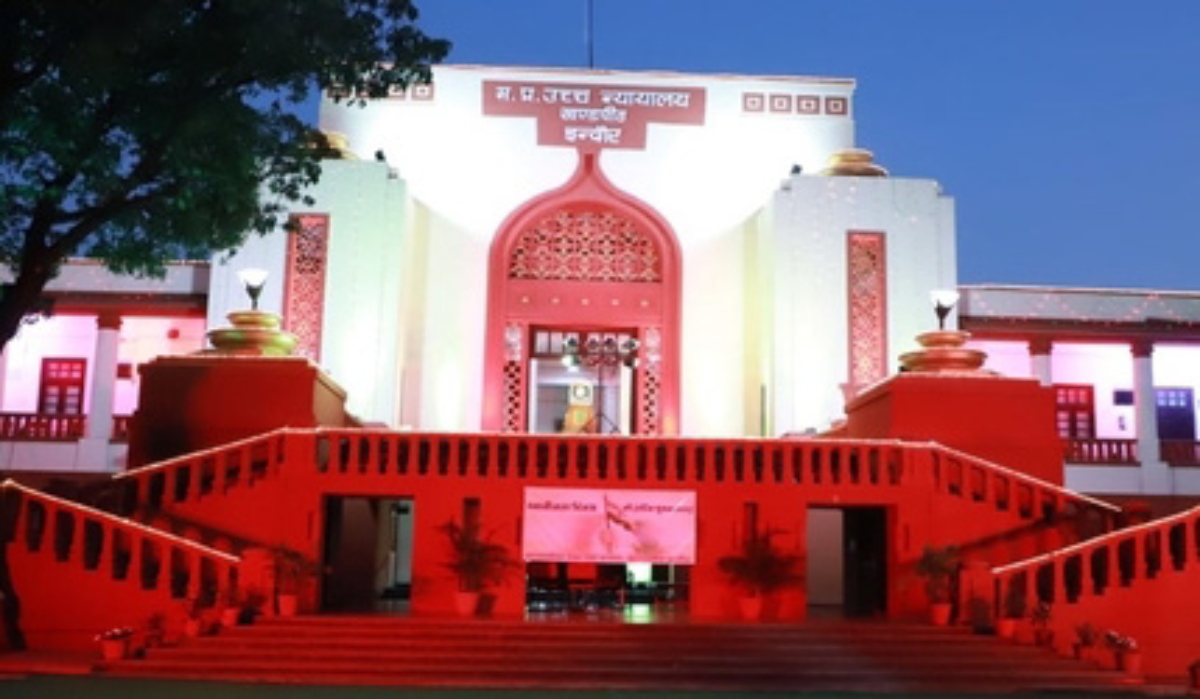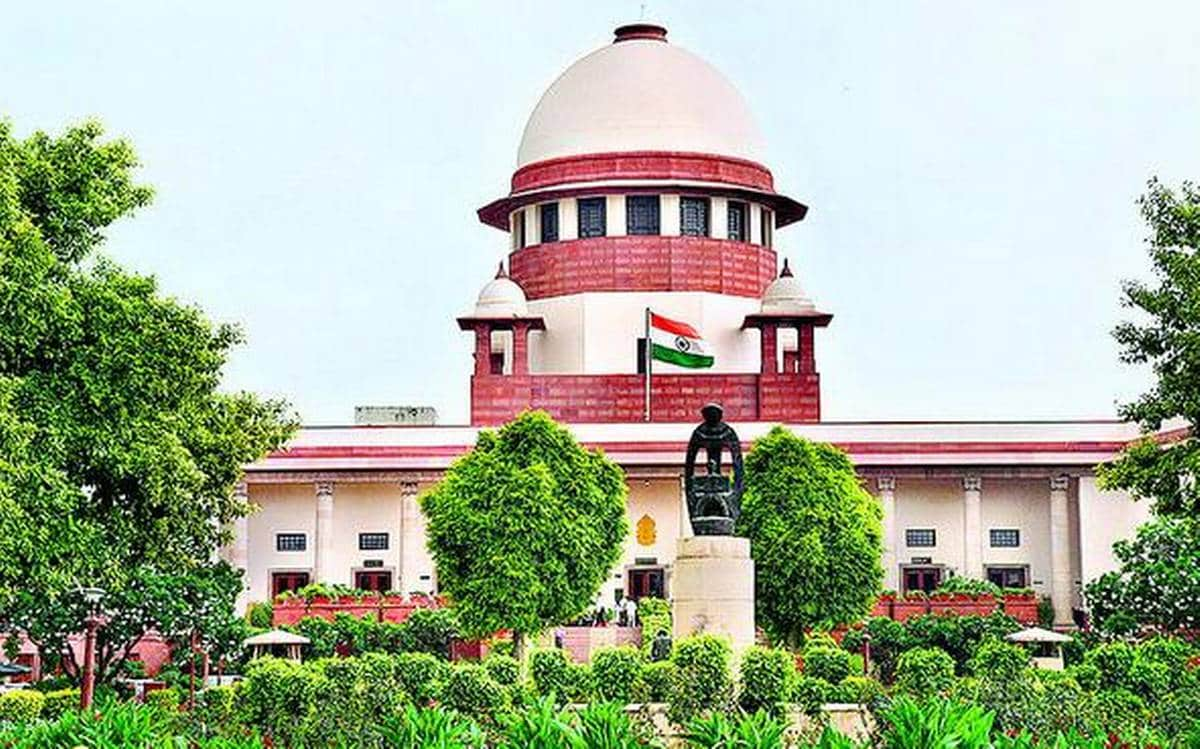While dissolving a marriage on an appeal that was filed by the husband alleging cruelty at the hands of his wife, the Madhya Pradesh High Court in a recent, remarkable, refreshing, robust and rational judgment titled Rajesh Bhoyale vs Smt Mahadevi in First Appeal No. 1172/2019 that was delivered finally on March 29, 2022, observed clearly, cogently and convincingly that a long-standing dispute itself is mental cruelty to a party who intends to live in a domestic relationship and peace. The Bench of Justice Sheel Nagu and Justice Anand Pathak observed thus as it allowed the appeal filed by the appellant-husband against the judgment of the Family Court, Gwalior rejecting his application under Section 13 (1)(ia) of the Hindu Marriage Act,1955 seeking a divorce. Very rightly so!
To start with, this learned, laudable, landmark and latest judgment authored by Justice Anand Pathak for a Division Bench of Gwalior Bench of Madhya Pradesh High Court for himself and Justice Sheel Nagu sets the ball rolling by first and foremost putting forth in para 1 that, “The present appeal is preferred under Section 19 of the Family Court Act, 1984 against the judgment and decree dated 27-03- 2019 passed by the Link Family Court, Gwalior whereby the application preferred by the appellant/applicant/husband under Section 13(1)(iA) of Hindu Marriage Act, 1955 (hereinafter referred to as “the Act”) has been rejected.”
While elaborating the facts of the case, the Bench then states in para 2 that, “Precisely stated facts of the case are that marriage of appellant and respondent was solemnized on 22-02-2004 according to Hindu Rites and Rituals. After marriage, respondent/wife insisted to live separately and in order to maintain domestic peace, after 6 months of marriage, appellant and respondent started living separately. Despite living separately, respondent/wife used to quarrel with appellant and left for her maternal home without any information. She did not take any interest in household work. Out of their wedlock two children born but due to negligence on part of wife, one child died and only one survived. Respondent/wife used to talk on mobile for hours together and used to move with unknown persons during late night in city. Thus, domestic incompatibility prevailed between the parties which led to filing of application under Section 13 of the Act seeking divorce.”
It deserves mentioning that the Bench then notes in para 3 that, “One fact deserves mention is that respondent/wife did not appear in the trial Court and remained ex parte. That fact has been mentioned in para 5 of the judgment. Before this Court also, notice was issued for service of respondent through RAD mode earlier vide order dated 05-07-2019, but same returned unserved. Thereafter vide order dated 26-08-2019 process fee by RAD mode was directed to be given for service and same was received by the respondent but she did not prefer to appear, therefore, matter was heard in absence of respondent.”
To put things in perspective, the Bench then after hearing the learned counsel for the appellant at length and perusing the record as mentioned in para 4 then envisages in para 5 stating that, “In the instant case as per pleadings it appears that appellant filed application under Section 13 of Hindu Marriage Act with specific allegations that his marriage was solemnized on 22-02- 2004 at Gwalior and at relevant time appellant was living along with his parent but soon after his marriage, his wife compelled him to change his house and therefore, appellant has to part his ways with his parents and had to live with his wife in nuclear family for domestic peace. From their wedlock, two sons were born, out of which one was 14 years of age at the time of filing of application and another son passed away at the age of 3 years due to alleged negligence of respondent/wife.”
Needless to say, the Bench then states in para 6 that, “Submissions meandered through different allegations wherein neither she cooperated in performance of daily household work, taking care of children or in respect of maintaining domestic peace.”
Simply put, the Bench then reveals in para 7 that, “According to appellant, she used to converse on mobile for hours together and whenever intercepted, reacted sharply and indulged into verbal spat. Allegations further move in respect of her movement along with some unknown persons in the city but same has not been established by the appellant through cogent evidence. It was also the allegation of appellant that she does not cooperate in cohabitation with the appellant and she always avoided him.”
To be sure, the Bench then discloses in para 8 that, “Appellant referred certain mediation proceedings also pertaining to year 2009 to 2015 at Police Station Inderganj and from the pleadings and evidence it appears that reconciliation proceedings have been held but of no avail. Even in earlier case services of mediation center of this Court were also availed and settlement was struck on 01-12-2015 in case No.857/2015 but soon thereafter things turned ugly.”
Truth be told, the Bench then enunciates in para 9 that, “All these allegations as referred above are being narrated in the divorce application and affidavit filed under Order XVIII Rule 4 of CPC by the appellant. His examination-in-chief was also duly recorded by the Family Court but since the respondent did not appear and remained ex parte, therefore, those allegations were not rebutted in any manner because nobody rebutted and cross-examined the witness on behalf of respondent/wife. Beside oral evidence, appellant filed copy of complaint dated 29-04-2011 Ex-P/2 addressed to Station House Officer, Police Station Inderganj in which he referred about the conduct of his wife. In the said complaint, it is surfaced that wife is extending threat to the appellant regularly and at times she indulged into physical violence also, intimidating him for dire consequences as well as for false implication etc.”
As we see, the Bench then observes in para 10 that, “Notice Ex-P/3 has also been exhibited by the appellant by which he issued legal notice on dated 08-10-2015 to his wife for seeking divorce, therefore, in all probabilities, respondent was well aware of the fact regarding domestic incompatibility shared by the couple and respondent knew the fact that appellant would file divorce proceedings against the respondent.”
As it turned out, the Bench then mentions in para 11 that, “Notice for mediation dated 15-10-2015 has also been exhibited by the appellant as Ex-P/5 in which he was directed to appear on 28-10-2015 at Mediation Center, High Court as pre-litigation mediation case. Appellant also referred the compromise deed Sulahnama (dated 01-12-2015) in which respondent was advised to live with her husband at Gwalior with further undertaking that she would not quarrel with her mother and father-in-law and if she goes to her maternal home on religious occasions then said arrangement shall be done by the appellant. It was also agreed upon that appellant would not have any objection if she talks on mobile to her parent.”
Of course, the Bench then states in para 12 that, “Vide Ex-P/7 appellant also exhibited the complaint sent to Station House Officer, Police Station, Inderganj and copy endorsed to Superintendent of Police on dated 15-05-2017. All these documents were exhibited by the appellant in support of his submission.”
Most damningly, the Bench then clearly states in para 13 that, “From perusal of these documents and allegations as contained in appeal, divorce application and affidavit, it appears that for a considerable period of time appellant and respondent shared domestic incompatibility and conduct of the respondent wherein she constantly for more than fifteen years or since 2004, caused irritation, threat, intimidation and avoiding cohabitation on the pretext or the other collectively entitled the appellant to get the decree of divorce.”
Furthermore, the Bench then states in para 14 that, “When appellant specifically pleaded about the behaviour of respondent for last more than 15 years and different stages of dispute, reconciliation and complaints from time to time were referred which indicate that both shared domestic incompatibility.”
While citing the relevant case law, the Bench then observes in para 15 that, “So far as mental cruelty is concerned judgment of Apex Court in the case of Dr. N.G. Dastane Vs. Mrs. S. Dastane, AIR 1975 SC 1534 is worth consideration. The relevant extract of the judgment is reproduced as under:
“The question whether the misconduct complained of constitutes cruelty and the like for divorce purposes is determined primarily by its effect upon the particular person complaining of the acts. The question is not whether the conduct would be cruel to a reasonable person or a person of average or normal sensibilities, but whether it would have that effect upon the aggrieved spouse,. That which may be cruel to one person may be laughed off by another, and what may not be cruel to an individual under one set of circumstances may be extreme cruelty under another set of circumstances.”(1) The Court has to deal, not with an ideal husband and ideal wife (assuming any such exist) but with the particular man and woman before it. The ideal couple or a nearideal one will probably have no occasion to go to a matrimonial court for, even if they may not be able to drown their differences, their ideal attitudes may help them over- look or gloss over mutual faults and failures. As said by Lord Reid in his speech in Gollins v. Gollins (2) ALL ER 966
“In matrimonial cases we are not concerned with the reasonable man, as we are in cases of negligence. We are dealing with this man and this woman and the fewer a priori assumptions we make about them the better. In cruelty cases one can hardly ever even start with a presumption that the parties are reasonable people, because it is hard to imagine any cruelty case ever arising if both the spouses think and behave as reasonable people.”
The said judgment still holds the field and is source of wisdom time and again in respect of mental cruelty.”
Adding more to it, the Bench then points out in para 16 that, “The aforesaid decision was referred to with approval in AIR 2002 SC 2582 (Praveen Mehta Vs. Inderjit Mehta), (2007) 4 SCC 511 {Samar Ghosh Vs. Jaya Ghosh}, (2010) 4 SCC 339 {Manisha Tyagi Vs. Deepak Kumar}, (2012) 7 SCC 288 {Vishwanath Agrawal Vs. Sarla Vishwanath Agrawal}, (2013) 2 SCC 114 {U. Sree Vs. U. Srinivas}. In all these cases, the judgment rendered in the case of Dr. N.G. Dastane (supra) is relied upon. In the case of Samar Ghosh (supra), the Supreme Court has enumerated the illustrative instances of human behaviour which may be relevant for dealing with the cases of mental cruelty:
“No uniform standard can ever be laid down for guidance, yet we deem it appropriate to enumerate some instances of human behaviour which may be relevant in dealing with the cases of ‘mental cruelty’. The instances indicated in the succeeding paragraphs are only illustrative and not exhaustive.
(i) On consideration of complete matrimonial life of the parties, acute mental pain, agony and suffering as would not make possible for the parties to live with each other could come within the broad parameters of mental cruelty.
(ii) ** ** **
(iii) ** ** **
(iv) Mental cruelty is a state of mind. The feeling of deep anguish, disappointment, frustration in one spouse caused by the conduct of other for a long time may lead to mental cruelty.
(v) A sustained course of abusive and humiliating treatment calculated to torture, discommode or render miserable life of the spouse.
(vi) Sustained unjustifiable conduct and behaviour of one spouse actually affecting physical and mental health of the other spouse. The treatment complained of and the resultant danger or apprehension must be very grave, substantial and weighty.
(vii) ** ** **
(viii) ** ** **
(ix) ** ** **
(x) The married life should be reviewed as a whole and a few isolated instances over a period of years will not amount to cruelty. The ill-conduct must be persistent for a fairly lengthy period, where the relationship has deteriorated to an extent that because of the acts and behaviour of a spouse, the wronged party finds it extremely difficult to live with the other party any longer, may amount to mental cruelty.
(xi) ** ** **
(xii) Unilateral decision of refusal to have intercourse for considerable period without there being any physical incapacity or valid reason may amount to mental cruelty.
(xiii) ** ** **
(xiv) Where there has been a long period of continuous separation, it may fairly be concluded that the matrimonial bond is beyond repair. The marriage becomes a fiction though supported by a legal tie. By refusing to sever that tie, the law in such cases, does not serve the sanctity of marriage; on the contrary, it shows scant regard for the feelings and emotions of the parties. In such like situations, it may lead to mental cruelty.”
It cannot be glossed over that the Bench then minces no words to state unequivocally in para 17 that, “It is equally well settled in law that lodging of false complaint amounts to cruelty {See: (2014) 7 SCC Malathi Vs. B.B. Ravi, (2013) 5 SCC 226 K. Shrinivas Rao Vs. D.A. Deepa, (2014) 16 SCC 34 K. Shrinivas Vs. Ku. Sunita and AIR 2003 MP 271 Johnson M. Joseph alias Shajoo Vs. Smt. Aneeta Johnson)}.”
It is worth noting that the Bench then remarks in para 18 that, “If the aforesaid pronouncements are tested on the anvil of present factual setup then it appears that for very long time parties shared domestic dispute and irritability and mental cruelty inflicted by the wife over her husband through her conduct and through her denial for cohabitation. In absence of any cross-examination or rebuttal, allegations of appellant assume importance.”
For sake of clarity, the Bench specifies in para 19 that, “Although maintenance amount/alimony is not subject matter in the present case but since respondent/wife is not before the Court, therefore, question of maintenance amount/alimony is left open and it is made clear that she may be at liberty to seek maintenance amount/alimony in accordance with law.”
Resultantly, the Bench then hastens to add in para 20 that, “Cumulatively, it appears that Family Court erred in rejecting the application for divorce preferred by the appellant whereas divorce decree ought to have been passed in the case. Long standing dispute itself is a mental cruelty to a party who intends to live in domestic relationship and peace.”
Finally, the Bench then concludes by holding in para 21 that, “Resultantly, the appeal stands allowed. The impugned judgment and decree dated 27-03-2019 passed by the Link Family Court, Gwalior is set aside. Application under Section 13 of the Act stands allowed. Appellant is entitled to get divorce from his wife, respondent herein. Decree be drawn accordingly.”
In a nutshell, the Gwalior Bench of Madhya Pradesh High Court comprising of Justice Sheel Nagu and Justice Anand Pathak who delivered this extremely commendable judgment have made it crystal clear that long standing domestic dispute constitutes ‘mental cruelty’ to spouse who intends to live in a domestic relationship and peace. So it is a good ground for obtaining divorce. Accordingly the divorce is granted thus to the appellant-husband by allowing his appeal which he had filed against the Family Court, Gwalior which had rejected his application under Section 13(1)(ia) of the Hindu Marriage Act 1955 seeking a divorce. Very rightly so!


 Opinion3 years ago
Opinion3 years ago
 Entertainment8 years ago
Entertainment8 years ago
 Entertainment8 years ago
Entertainment8 years ago
 Fashion8 years ago
Fashion8 years ago
 Opinion3 years ago
Opinion3 years ago
 Politics8 years ago
Politics8 years ago
 Entertainment8 years ago
Entertainment8 years ago
 Entertainment8 years ago
Entertainment8 years ago








